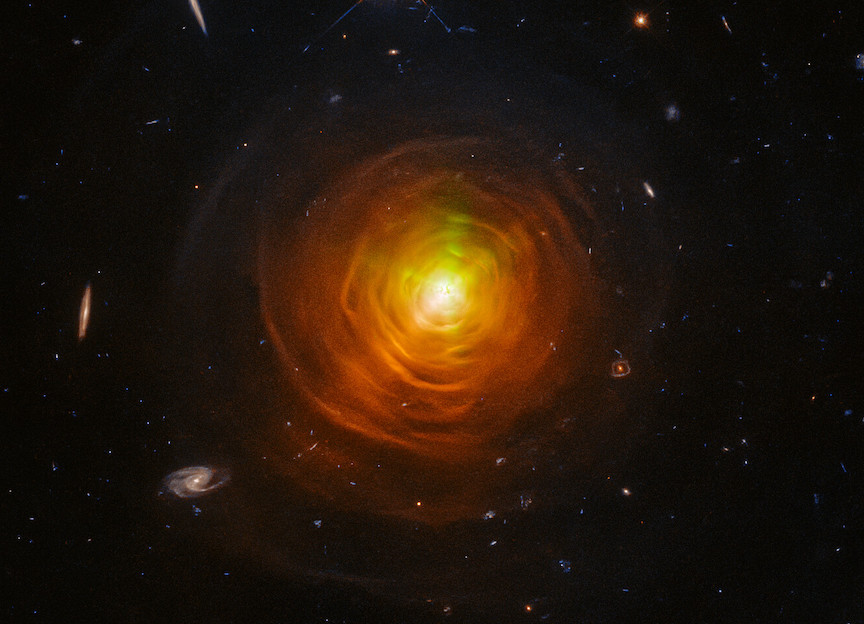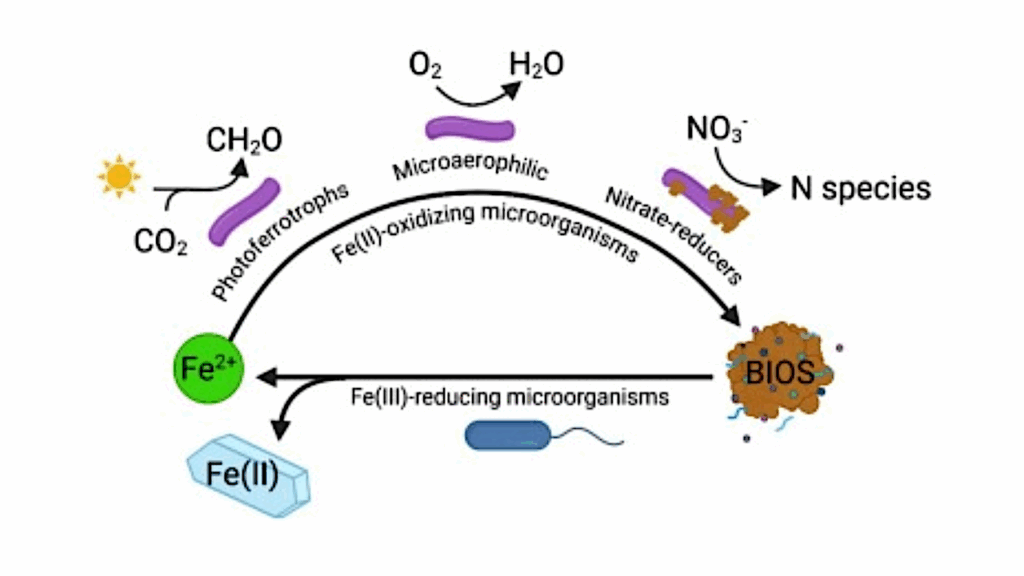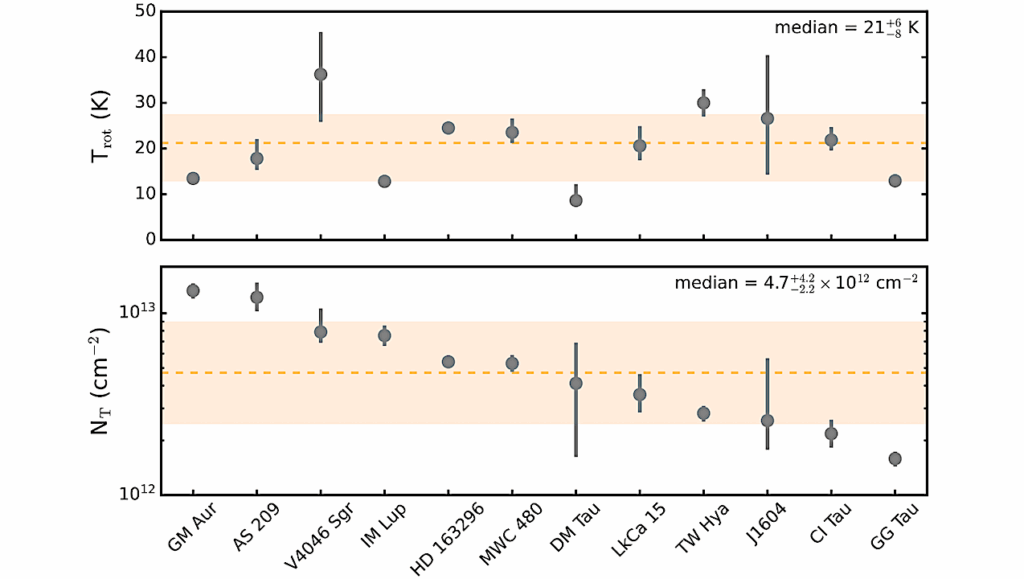Dying Star CW Leonis Surrounded By A Cloud Of Life Ingredient Carbon

The orange-red “cobwebs” in this Hubble image are dusty clouds of sooty carbon engulfing the dying star CW Leonis.
They were created from the outer layers of the star being thrown out into the inky black void. The carbon, cooked up through nuclear fusion in the star’s interior, gives it a carbon-rich atmosphere. Blasting the carbon back into space provides raw material for the formation of future stars and planets.
All known life on Earth is built around the carbon atom. Complex biological molecules consist of carbon atoms bonded with other common elements in the universe.
At a distance of 400 light-years from Earth, CW Leonis is the closest carbon star. This gives astronomers the chance to understand the interplay between the star and its surrounding, turbulent envelope.
The complex inner structure of shells and arcs may be shaped by the star’s magnetic field. Detailed Hubble observations of CW Leonis taken over the last two decades also show the expansion of threads of ejected material around the star.
“CW Leonis is believed to be in a late stage of its life, blowing off its own sooty atmosphere to form a white dwarf. Based upon isotope ratios of magnesium, the initial mass of this star has been constrained to lie between 3–5 solar masses. The mass of the star’s core, and the final mass of the star once it becomes a white dwarf, is about 0.7–0.9 solar masses. Its bolometric luminosity varies over the course of a 649-day pulsation cycle, ranging from a minimum of about 6,250 times the Sun’s luminosity up to a peak of around 15,800 times. The overall output of the star is best represented by a luminosity of 11,300 L☉.
The carbon-rich gaseous envelope surrounding this star is at least 69,000 years old and the star is losing about (1–4) × 10−5 solar masses per year. The extended envelope contains at least 1.4 solar masses of material.] Speckle observations from 1999 show a complex structure to this dust envelope, including partial arcs and unfinished shells. This clumpiness may be caused by a magnetic cycle in the star that is comparable to the solar cycle in the Sun and results in periodic increases in mass loss.
Various chemical elements and about 50 molecules have been detected in the outflows from CW Leonis, among others nitrogen, oxygen and water, silicon and iron. One theory was that the star was once surrounded by comets which melted once the star started expanding, but water is now thought to form naturally in the atmospheres of all carbon stars.”
Astrobiology








